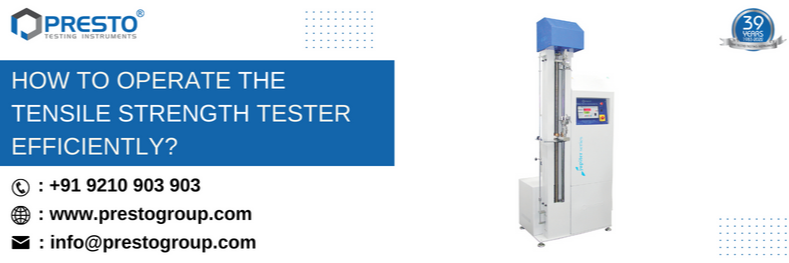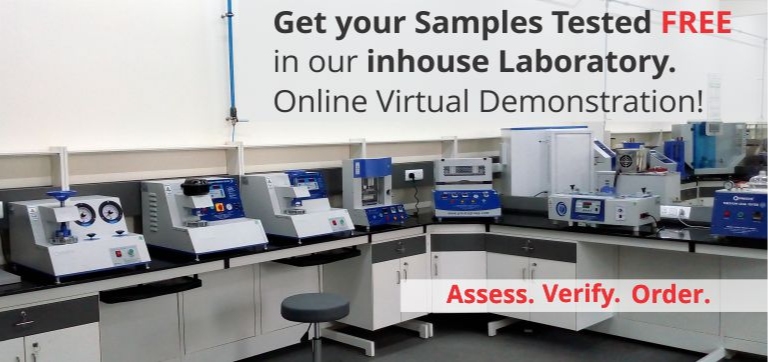How to operate the tensile strength tester efficiently?

Gaurav Malhotra
Plastics are a material that is used in many different industries, like food, beverages, and many more to manufacture different products. Testing the quality of the plastic will determine how long the product will last. Out of various quality tests, tensile tests are considered to be one of the essential quality tests that will help to determine the quality of plastics when exposed to high tensile forces. This test can be done with the help of a quality lab testing instrument known as a tensile strength tester. Presto being the leading lab testing instruments manufacturer offers high-quality tensile strength testing equipment digital model that is based on the principle of a constant rate of the traverse. This testing instrument has been equipped with an upper and lower jaw that helps to place the specimen accurately on the machine.
What is tensile strength testing?
Introduction about Presto tensile strength tester
Features of Presto tensile strength tester
- Advanced load sensor sensing through advanced electronics.
- Highly sensitive load sensor with linearity feature and repeatability
- Crosshead travel length: 750mm grip to grip
- Single column rugged structure
- Safety limit switches for over-travel safety
- Hardened lead screws for frictionless movement
- Load cell calibrated by NPL-approved proving ring/dynamometers
- High accurate micro-controller-based system controls
- Peak Hold facility available
- Bright LED display
- Immediate analysis of results after test with complete accuracy & precision
- Feather touch controls
- Specially designed gripper jaws for holding fragile samples.
- Another capacity available chart as per requirement.
- Wintest one-way communication software.
- Graph of Force vs Elongation
- Easy Data management. Users can create product Identification, Sample ID, Shape of Specimen, Company Name, operator details, etc.
- Auto cut-off facility.
- AC Speed drive as an optional accessory (Variable Test Speed)
Technical Specifications of Presto tensile strength tester
- Motor: ¼ HP Single Phase 220 / 110 V AC Supply
- Speed: 100 mm/min and 200 mm/min (Changeable through Belt & Pulley mechanism)
- Display: Digital (LED)
- Accuracy: ± 2% at Full Load (with master load)
- Grip to Grip separation: Min 25mm and Max. 700mm
Working on Presto tensile tester digital model
- Start the machine by plugging it into a 5 amp switch.
- After starting the machine, you need to place the specimen accurately and set the peak load indicator.
- When you turn the rotatory switch in the down direction, the lower grip will be moved in the lower direction and it will increase the value shown in the indicator.
- You can even turn on the rotatory switch when the specimen will get ruptured.
- Once the above steps will be followed then stop the machine and display the load value and return to zero.
- The elongation display will get frozen and you will get the memory switch on the load indicator to show the peak value.
- You can even assess the peak value of the specimen to accurately conduct the test results.
you may also like
- The Ultimate Guide to Lab Testing Equipment: Ensuring Quality with Precision Instruments
- GSM Calculator Guide: How to Measure Fabric, Paper & Plastic Weight
- What Is a Gloss Meter? Working Principle, Uses & Benefits Explained
- Applications of Tensile Testers in Plastic, Metal & Rubber Industries
- How UV Chambers Help Manufacturers Beat Sunlight and Weather Challenges
Recent News
- Paper & Packaging Testing Instruments
- Paint, Plating & Coating Testing Instruments
- Plastic & Polymer Testing Instruments
- Environmental Testing Chambers
- PET & Preform Testing Instruments
- Color Measuring Testing Instruments
- View Entire Range Instruments

Catalogue 2023
Get information about new product launches, research, innovation and endeavors at Presto.
download Free Copy
Get a Quote

